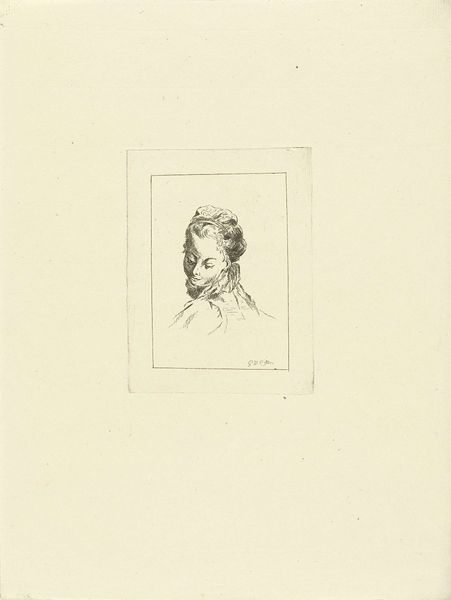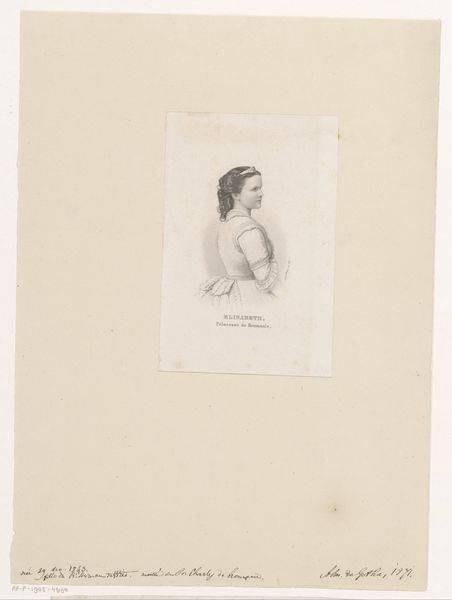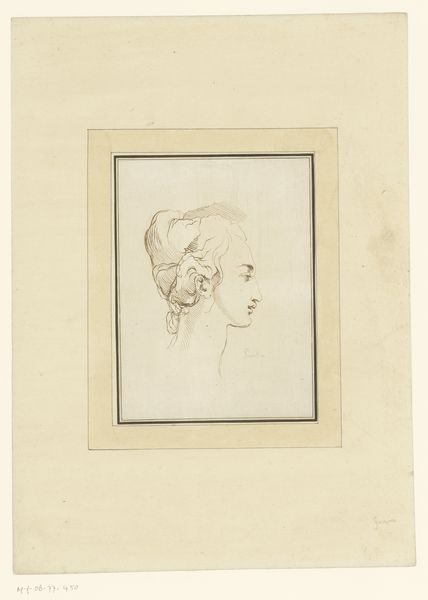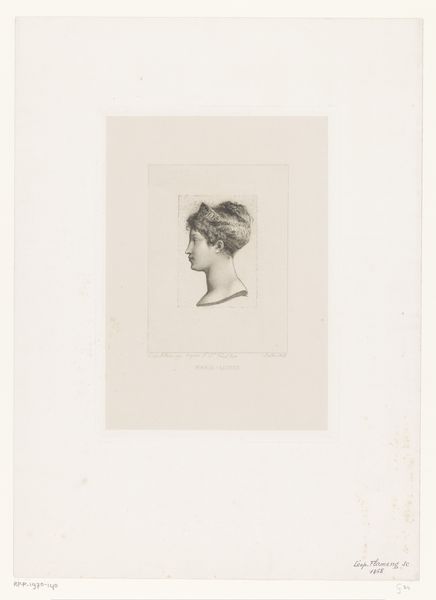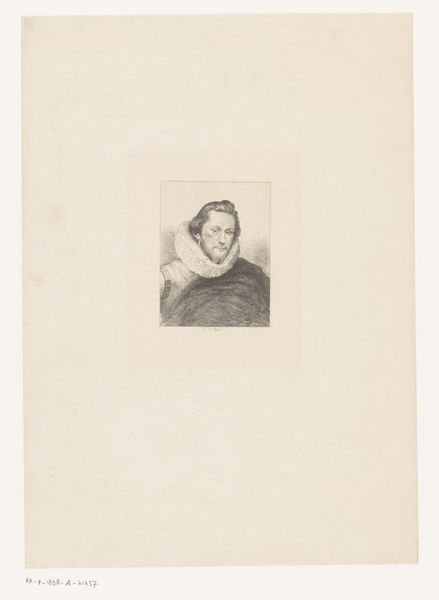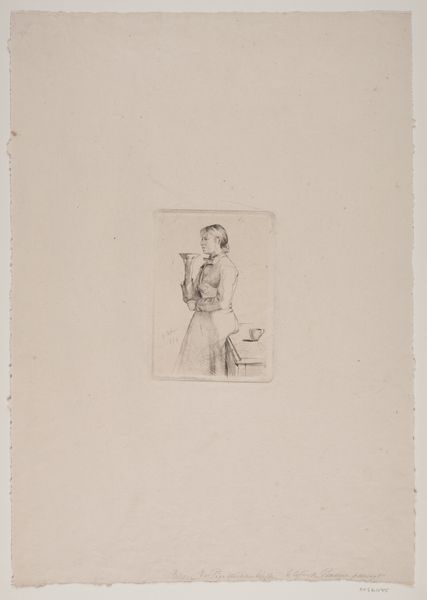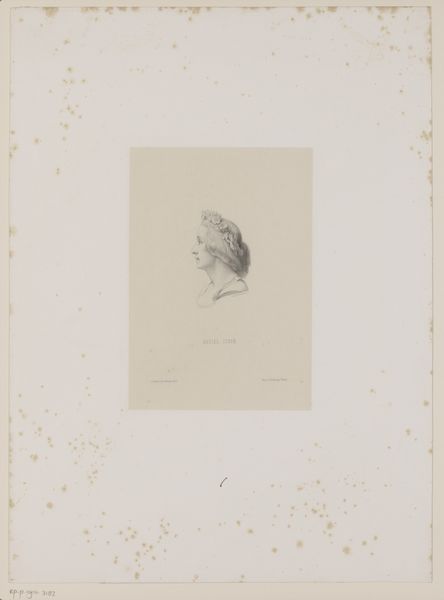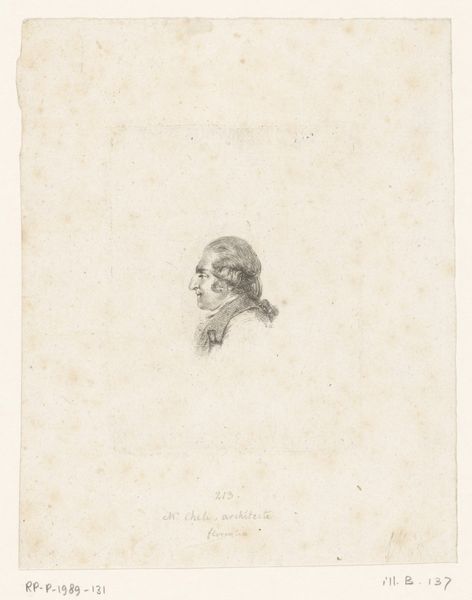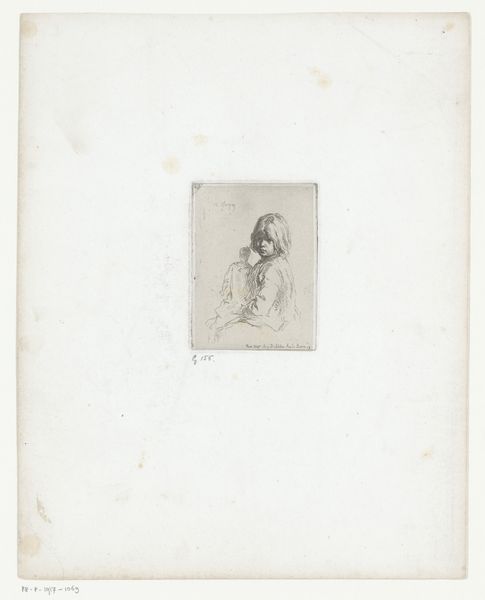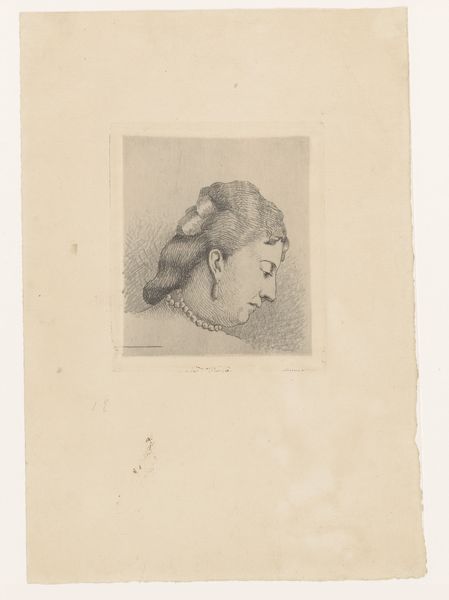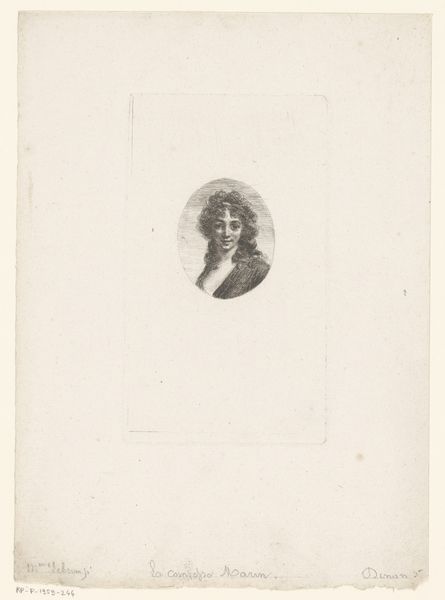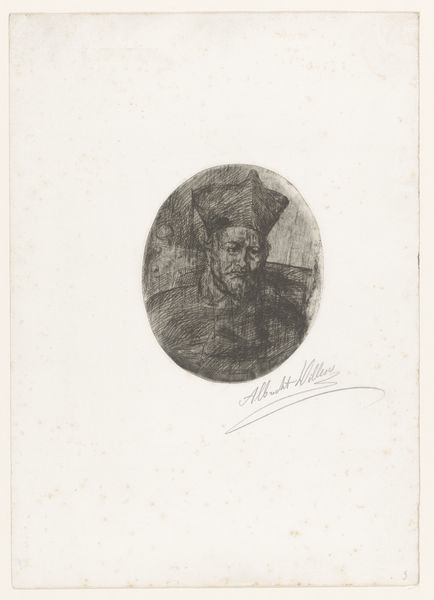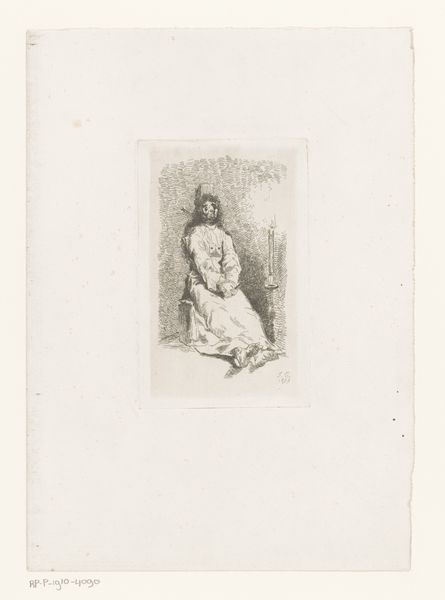
Dimensions: height 197 mm, width 128 mm
Copyright: Rijks Museum: Open Domain
Editor: This is Léopold Flameng’s “Portret van Marie Antoinette,” placing its origins somewhere between 1841 and 1910. It’s a print achieved through etching and engraving. The portrait's subdued tones lend a rather somber, almost ghostly aura to Marie Antoinette. How would you interpret this particular portrayal? Curator: Oh, yes. There is an interesting dance happening here between meticulous detail and ghostly presence. This Neoclassical portrayal seems to capture her essence, not just her likeness. Imagine the artist wrestling with history, filtering a tragic story through lines and textures, all those years after her demise... Almost like whispering secrets. Don't you feel that way? Editor: It does evoke a kind of muted drama, very unlike the flamboyant image of Marie Antoinette that's usually painted. I do wonder about that towering hairstyle. Curator: Absolutely! Her infamous hairstyle... Look closely – it’s a world unto itself! Beyond ostentation, could it symbolize power teetering, on the verge of collapse? Like the precarious structure of the French monarchy itself? Think about what such extravagance would have represented against the backdrop of the poverty endured by so many others at the time. Perhaps a silent commentary, etched in ink, echoing down the decades? What do you think? Editor: That's such a great point. Considering the tumultuous events of the French Revolution, it’s hard not to see her image as laced with both grandeur and foreboding. Curator: Precisely! A beautiful collision of splendor and doom. Isn't it incredible how much a simple portrait can reveal about both its subject, its creator, and the long shadow of history? Editor: Absolutely. I’ll never look at another portrait the same way! Curator: And I'm keen to keep exploring, what about next week?
Comments
No comments
Be the first to comment and join the conversation on the ultimate creative platform.
